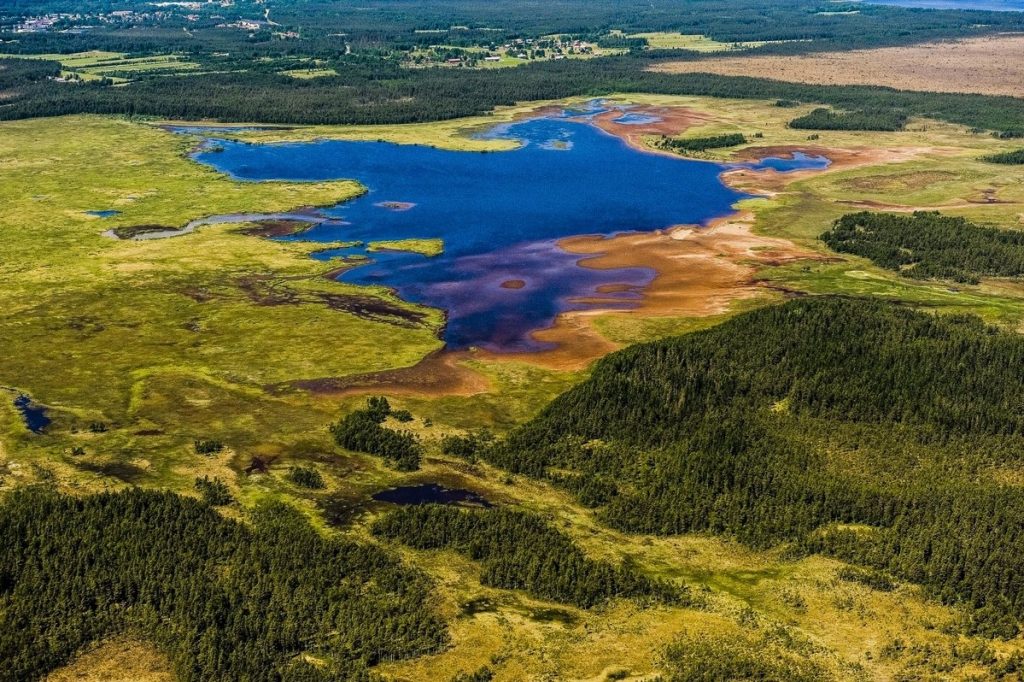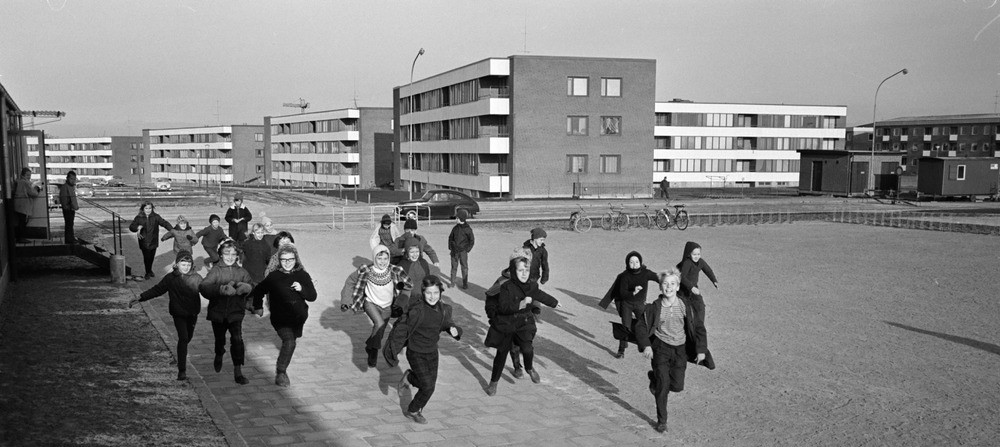
Copyright between protection and democratic freedom
Opening up a cultural heritage institution’s data always has legal implications. This is why we dedicate this session to copyright and licensing. We dive deeper into different standardised rights statements and the chances and challenges of using open licences.
We had three experts on the field with us in this session: Sofia Kullman (Swedish National Heritage Board), Douglas McCarthy (Europeana Foundation) and Dr. Riitta Ojanperä (Finnish National Gallery), who shared their insights with us on how to work with licences, the Public Domain and copyright.
Open access as a tool for GLAM institutions
Douglas McCarthy kicked off the session with his talk on “Power your mission with open access” (slides/presentation) and introduced us to the bigger picture of open access in the cultural heritage sector: “Open access is an important tool for museums, libraries, archives, and galleries to connect with and power their mission as organisations.” The connection between open access and an institution’s mission was an important aspect of his presentation. He asked the participants to reflect on what they as institutions want to achieve – and how this (should) reflect in their image policies.
Another important aspect was the difference between open and free access: He cited the open definition of the Open Knowledge Foundation: “Open means anyone can freely access, use, modify, and share for any purpose.” This means that some licences are not considered as allowing for open access, such as the Creative Commons licence CC BY NC-ND (non-commercial, no derivatives) – this one does not enable your community to use them for example in Wikipedia articles or on social media. You can find all rights statements and licences that are conformant with the open definition at the end of this summary.
Together with Dr. Andrea Wallace, Douglas works on an Open GLAM survey that researches the global picture of GLAM institutions and their open access scope indicating how much of an institution’s eligible data is released on open access terms. This is also one of the examples where open GLAM shows its dimensions beyond technical and legal considerations: It is also a global community of people working together, with shared spaces for conversation (both on and offline) and shared values around openness for cultural heritage. Another example of these next-step activities of the Open GLAM community was the growing debate on ethics:
“Ethics is an increasingly important part of Open GLAM, for example considering repatriation and avoiding exploitation of colonially connected objects through digitisation. […] There are ethical considerations which we should think about and recognize when we’re talking about open GLAM beyond a legal and a technical understanding.” Douglas McCarthy
The legal perspective on open licences
With the Swedish National Heritage Board’s lawyer, Sofia Kullman (presentation in Swedish), we turned to legal implications of the Public Domain and different standardised licences. She introduced the relations between international treaties, EU regulations and national Swedish laws concerning copyright. It can get quite difficult to translate copyright regulations from one legal system to another, as different rights are considered, e.g. moral or economic ones. She explained in depth the differences between Public Domain and CC0 – the first means that all copyright has expired and the object is free to use. For the end-user, the second means just the same, but not for the author of the work: The person creating a work is the only one who can dedicate it to CC0, which means that they neglect all copyright related to the work.
An important part of the presentation was the standardised licensing tools that Creative Commons and Rightsstatements.org present: They can be applied internationally and as they are linked to explanations online, people can get a quick explanation about what they are allowed to do with the work. This is also an easier way of dealing with online sources for the provider, as they do not have to negotiate and communicate copyright with every single person curious about their works again.
Sofia also introduced the periods that apply for different works, for example 70 years after the author died or 50 years after an object was created. We dug deeper into the period of 50 years, as this applies for example for non-original photographs – and it can be quite difficult to define, what an original photograph is (you would have to wait for 70 years after the photographer died for it to be released into the Public Domain) and what a non-original photograph is. Sofia explained that this is a controversial issue and that there are still ongoing discussions on this topic. But as a general rule, original photographs tend to be more staged, have a certain aspect of artistic perspective, perhaps people and light are placed in a certain way.

The open-access journey at the Finnish National Gallery
In the third part of the session, Riitta Ojanperä gave an overview of the process it takes an institution to fully embrace open access (presentation). The difference between making the collection visible online and true open access as well as the importance of perceiving it as an ongoing process are two crucial aspects of the museum’s journey. The first one is a matter of licences an institution chooses to use when publishing data: Riitta described their first steps of sharing data online as making their collections visible – but it was only after they shared a part of their collection at the Finnish National Gallery as Public Domain marked that she would describe it as an open access activity. The second aspect is of particular importance to those museums feeling at the starting point of many open GLAM steps: Riitta described the moments when the museum decided to take a sometimes small, sometimes big step, working on the issue and then evaluating it. This is a learning many open GLAM institutions (or those on their way) can take away from this session: The growing of open access policies can take years; it needs a lot of small steps and the willingness to learn from the past steps.
Turning to the institution’s internal communications, she also mentions two arguments often used in the open GLAM discussion: To fully embrace open access also means to accept that cultural heritage institutions are not the only ones able to define meaning. Riitta sums up their motivation to take these steps:
“Partly of course, because our collections belong to the Finnish people and they are part of our common European cultural heritage. We want to guarantee open access but also encourage participation in allowing the creation of new meanings and discoveries among larger audiences than before.” Riitta Ojanperä
Take-away lessons
- Opening up collections and applying open licences is a process that involves internal and external stakeholders.
- Open access is not only an activity concerning the collections – it can have a wider impact when perceived as a tool to power the institution’s mission.
- It can take years to persuade internal stakeholders to use open licences. A network such as open GLAM and the possibilities to connect can be a vital source for resources, information, and arguments in the process.
- Standardised licences make it easier for the end-users to know what they can do with your data – and at the same time, it will take less communication effort from your side to explain it to them.
Go to the next session: Play with data. Creative re-use and digital experiences!
Further information
Open GLAM initiative on Twitter
Further reading
Anne Young (2020): Making Copyright Determinations for Open Access in GLAMs. Medium.
Australian Museums and Galleries Association (AMaGA): First Peoples: A Roadmap for Enhancing Indigenous Engagement in Museums and Galleries.
Douglas McCarthy & Andrea Wallace (2018-): Survey of GLAM open access policy and practice. Medium.
Douglas McCarthy & Riitta Ojanperä (2018): Hello world! The Finnish National Gallery opens up its collections. Medium.
Douglas McCarthy (2019): Open Access Scope in Open GLAM. Medium.
Douglas McCarthy (2019): Uncovering the global picture of Open GLAM. Medium.
Douglas McCarthy (2019): Licensing policy and practice in Open GLAM. Medium.
Evelin Heidel (2020): A journey into openness: an interview with Connecticut Digital Archive’s Mike Kemezis. Medium.
Mathilde Pavis & Andrea Wallace (2019): Tread carefully when repatriating art to Africa. The Times.
All licences and rights statements conformant to open access:
- Public Domain Mark 1.0
- CC0 1.0 Universal
- Attribution 4.0 International (CC BY 4.0)
- Attribution-ShareAlike 4.0 International (CC BY-SA 4.0)
- No Known Copyright
- Open Data Commons Open Database Licence (ODbL)
- Open Data Commons Public Domain Dedication and Licence (PDDL)
- Open Data Commons Attribution Licence (ODC-BY)